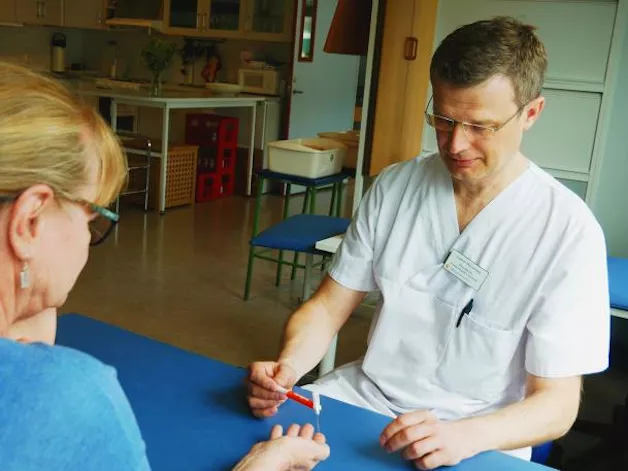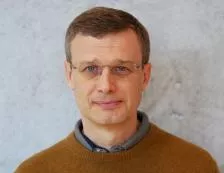Meet our researchers: hand surgeon with an understanding of the brain
The hand is the human tool. With the hand, we perceive touch and, without the help of sight, we recognise shapes and surface structures. The hand’s movements and gestures are also important for our body language, our personality and identity. It is the interaction between the brain and the peripheral nerves that controls the hand’s movements and ability to feel. At Lund University, researchers are trying to find the balance between the brain, the hand and the possibilities of technology.
As early as 2 000 years ago, Aristotle said that “we learn with the hand – the hand remembers”. The hand can be viewed as a sensory organ with well-developed sensory functions that are linked to a particular area of the brain. The hand is sometimes called the outer brain as it is represented by such a large area of the brain. The human nervous system is also one of the most complex systems we have.
“Just opening a can of soft drink requires several parts of the nervous system to cooperate. When a nerve in the hand or arm is damaged, it is not able to convey signals from the sensory receptors to the brain or to send signals from the brain to the muscles. A nerve cell is sometimes so damaged that the communication to the brain is shut down completely and the person loses feeling and mobility in the hand”, says Anders Björkman, adjunct professor of hand surgery and consultant in the specialised surgery unit at Skåne University Hospital in Malmö.
Researchers are investigating the cooperation between the peripheral nerves and the central nervous system. They want to know what happens in cases of nerve damage both in the peripheral nerve and in the brain and how the treatment of nerve damage can be improved.
The plasticity of the brain
The brain is dynamic and quickly adapts to different situations, a phenomenon called plasticity. Within hand surgery, researchers are studying the plasticity of the brain and how it can be used in the treatment of patients with nerve damage. They want to find ways to control the brain to trick and train it into becoming more dynamic.
The brain can be stimulated to better interpret the nerve signals from a damaged nerve and, consequently, lost function can be improved. This may be in patients with reduced function in the hand or loss of feeling, or in cases where the hand is missing altogether. At different stages following a nerve injury, thanks to its plasticity and through different training models, the brain can also learn, to an extent, to use other sensory impressions to achieve improved hand function.
“The brain compensates for sensory loss, with help from hearing and sound impressions among other things. In cases of loss of a function, the brain can adapt to new requirements and another sense gains enhanced functions. We develop different methods that train the brain to convert or redirect, for example, what you hear into sensory impressions in the brain.”
Interdisciplinary research required for smarter prosthetics
One part of the research within hand surgery focuses on improving the possibilities for amputees by developing the next generation of prosthetic hands. The research is aimed at the interaction between the hand and the brain in combination with technological aids. Transferring nerve signals to and from a prosthetic hand is an enormous challenge that requires interdisciplinary knowledge where medicine and engineering are brought together.
“We need to carry out further research on how we can get the nerves to grow and, above all, to grow correctly. We also need to better understand the plasticity of the brain and its mechanisms. With the help of technology, I hope that, in the long term, we can alleviate nerve damage and develop prosthetics that benefit patients.”
"Just opening a can of soft drink requires several parts of the nervous system to cooperate.”
Hand injuries that look insignificant may actually be very complicated. A seemingly simple puncture or cut can lead to nerve damage in the hand, affecting function.
“Even if it is possible to repair nerve damage, it often leads to life-long consequences. It takes approximately three months for a nerve to grow back after an operation, and rehabilitation is important and valuable for the patient. We want to find new ways to stimulate and improve nerve function following an operation.”
Text and photo: Tove Gilvad
Anders Björkman
Name/Background: Anders Björkman, adjunct professor at Lund University and consultant in hand surgery at Skåne University Hospital in Malmö. Anders Björkman has conducted research since starting work at the hand surgery clinic in Malmö in 2002. He works at the clinic at least one day per week to better understand the patient experience.
Something I have learned from: I cooperate with researchers at LTH on brain imaging with advanced magnetic camera technology. I think it is very instructive to balance medicine and technology. I have an understanding of the enormous technical expertise required to be able to see how neurons are activated in brain and how the brain reacts.
Interests: I play seniors tennis – that is, tennis for those who are over 50. I started playing tennis as a four-year-old and have taken it up again in recent years.
Superpower: I am curious, a characteristic that drives me both at work and at home. There has always been a challenge in learning more about things.
Information on Anders Björkman’s publications in the Lund University Research Portal
One of the world’s oldest clinics
Read more about the hand surgery specialisation and the clinic.

